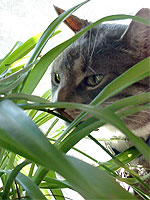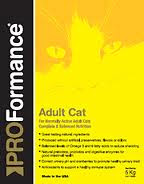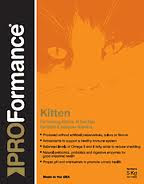Cats Beware: Dangerous House Plants
 Labels:
About Cats
by Fabulous Pets House
Labels:
About Cats
by Fabulous Pets House Monday, January 24, 2011
Monday, January 24, 2011
Cats Beware: Dangerous House Plants
by Dr. Jill Richardson
Cats have a natural curiosity, and many are attracted to plants and flowers. There are many popular plants that can be dangerous for cats if ingested. One of the smartest things a pet guardian can do is to make sure the plants you bring into your cat's home are safe.
What are some common houseplants that are dangerous to cats?
Some plants may cause only mild stomach upset if ingested, while others can cause kidney or liver failure. The following is a partial listing of potentially deadly plants for cats — make sure to keep these plants out of your cat's reach.
Rhododendron spp.
Members of the Rhododendron species, including azalea and rhododendrons contain grayanotoxins which can lead to heart dysfunction. Signs generally occur within 4-12 hours of ingestion and may persist for several days.
Cardiac Glycoside-Containing Plants
There are hundreds of cardiac glycosides identified in various plants, including oleander (Nerium oleander), lily-of-the-valley (Convallaria majalis), and foxglove (Digitalis purpurea). In most cases, all parts of the plant are toxic and even small amounts can cause significant clinical signs. Clinical signs seen most commonly involve the gastrointestinal tract and cardiovascular system.
Castor Beans (Ricinus communis)
Castor beans are often used in jewelry, and the oil extracted from the seeds is used medicinally, e.g., castor oil. Ricin is the toxic principle of castor beans and is considered to be one of the most potent plant toxins known.
Cycad Palms (Cycas, Zamia)
Cycad palms are found naturally in the sandy soils of tropical to subtropical climates, but may also be grown as bonsai style houseplants in more temperate climates. Cycasin is considered to be the toxic principle that is responsible for the liver and gastrointestinal signs generally seen with poisoning. Most parts of the plant are toxic, but the seeds contain a higher concentration of cycasin. Ingestion of one or more seeds can result in liver failure and death in cats and dogs.
Lilies
Easter lilies (Lilium longiflorum), tiger lilies (Lilium tigrinum), rubrum or Japanese showy lilies (Lilium speciosum and Lilium lancifolium), and various day lilies (Hemerocallis species) can cause kidney failure and death in cats. The toxic principle is unknown. Even minor exposures (a few bites on a leaf, ingestion of pollen, etc.) may result in kidney failure.
Fabulouse Pets Haus @Puchong Utama 8









